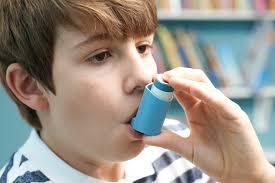What is Asthma?
Asthma is a chronic respiratory condition that affects the airways in the lungs, causing inflammation and narrowing. This leads to difficulty breathing, wheezing, and coughing. Asthma can range from mild to severe and affects people of all ages. While there is no cure for asthma, it can be managed with proper Inhalation drug delivery, treatment and lifestyle adjustments.
Common Causes of Asthma
Asthma is triggered by a combination of genetic and environmental factors. Understanding what causes asthma is key to controlling the condition. The following are common triggers:
1. Allergens
Exposure to pollen, dust mites, pet dander, and mold can trigger asthma symptoms. These substances cause an immune response that leads to airway inflammation, making it difficult to breathe.
2. Air Pollution
Air pollution, including smoke, car exhaust, and industrial emissions, can worsen asthma symptoms. Urban areas with high pollution levels often see increased cases of asthma, especially in children and the elderly.
3. Respiratory Infections
Colds, flu, and other respiratory infections can lead to asthma flare-ups. Viral infections, in particular, cause the airways to become more sensitive, which can trigger asthma attacks.
4. Exercise
For some individuals, physical activity can trigger asthma symptoms. This is known as exercise-induced asthma, where intense activity leads to shortness of breath, wheezing, or coughing.
Recognizing the Symptoms of Asthma
1. Shortness of Breath
One of the hallmark symptoms of asthma is difficulty breathing, especially during physical exertion or exposure to triggers. This occurs because the airways become inflamed and constricted, limiting airflow.
2. Wheezing
Wheezing, a high-pitched whistling sound during breathing, is another common symptom of asthma. It is caused by the narrowing of the airways and is often more pronounced during an asthma attack.
3. Coughing
Chronic coughing, particularly at night or in the early morning, can indicate asthma. The cough may be dry or produce mucus, and it often worsens with exposure to allergens or irritants.
4. Chest Tightness
Asthma can cause a feeling of tightness in the chest, which may be accompanied by pain or discomfort. This sensation is a result of the inflammation in the airways that makes it hard to breathe.
How is Asthma Diagnosed?
Asthma diagnosis involves a combination of medical history, physical examination, and lung function tests. These tests help to determine how well the lungs are functioning and whether asthma is present.
1. Medical History
Doctors will ask about the patient’s symptoms, family history of asthma, and exposure to potential triggers such as allergens or pollutants. Understanding the pattern of symptoms can aid in diagnosis.
2. Lung Function Tests
Spirometry is a common lung function test used to diagnose asthma. It measures the amount of air a person can exhale after taking a deep breath and how quickly they can breathe out. Lower than normal values may indicate asthma.
3. Allergy Testing
Allergy testing can help identify specific triggers that may be causing or worsening asthma symptoms. Skin tests or blood tests are used to determine sensitivity to allergens like pollen, dust, or pet dander.
Effective Asthma Management Strategies
Managing asthma requires a combination of medication, lifestyle changes, and avoidance of triggers. With proper treatment, individuals with asthma can lead normal, active lives.
1. Asthma Medications
There are two main types of medications used to treat asthma: long-term control medications and quick-relief inhalers.
Long-term Control Medications
These medications are taken daily to reduce inflammation and prevent asthma symptoms. Common examples include inhaled corticosteroids and leukotriene modifiers.
Quick-Relief Inhalers
Also known as rescue inhalers, these medications are used during an asthma attack to quickly open the airways and restore normal breathing. They are not a substitute for long-term treatment but are essential for managing sudden symptoms.
2. Avoiding Triggers
Avoiding known asthma triggers is crucial to managing the condition. This may involve using air purifiers, keeping pets out of the bedroom, or avoiding outdoor activities during high pollen seasons.
3. Monitoring Symptoms
Keeping track of asthma symptoms can help individuals and doctors adjust treatment plans. Using a peak flow meter to monitor lung function can alert patients to early signs of an asthma attack.
Inhalation Therapy: A Key Treatment for Asthma
Inhalation therapy is a cornerstone of asthma treatment. It involves the use of devices like inhalers and nebulizers to deliver medication directly to the lungs, where it is needed most. This method ensures rapid relief from symptoms and helps to prevent flare-ups.
There are various types of inhalers, each with different medications and delivery methods. Asthma patients often rely on inhalers to control their symptoms and prevent attacks. For more details on inhalation treatments, check out this resource on asthma.
Asthma in Children vs. Adults
1. Asthma in Children
Asthma is one of the most common chronic conditions in children. Kids with asthma may experience more frequent symptoms than adults, especially during play or physical activity. Parents should work closely with healthcare providers to create an asthma action plan that helps prevent attacks.
2. Asthma in Adults
While asthma is commonly diagnosed in childhood, adults can develop the condition as well. Adult-onset asthma can be more severe, especially if triggered by work-related factors such as exposure to chemicals or irritants.
Complications of Uncontrolled Asthma
If asthma is not properly managed, it can lead to serious health complications. These include:
- Chronic fatigue due to lack of sleep caused by night-time symptoms
- Frequent respiratory infections due to weakened lung function
- Lung damage over time, which can reduce the effectiveness of asthma medications
Severe asthma attacks can be life-threatening, making it essential for individuals to follow their treatment plan and avoid triggers.
Conclusion
Asthma is a manageable condition with proper treatment and care. By recognizing symptoms early, avoiding triggers, and following a comprehensive treatment plan, individuals with asthma can lead healthy, active lives. Inhalation therapies continue to be one of the most effective ways to control asthma symptoms. For more information about inhalation treatment options, you can explore resources on asthma.




